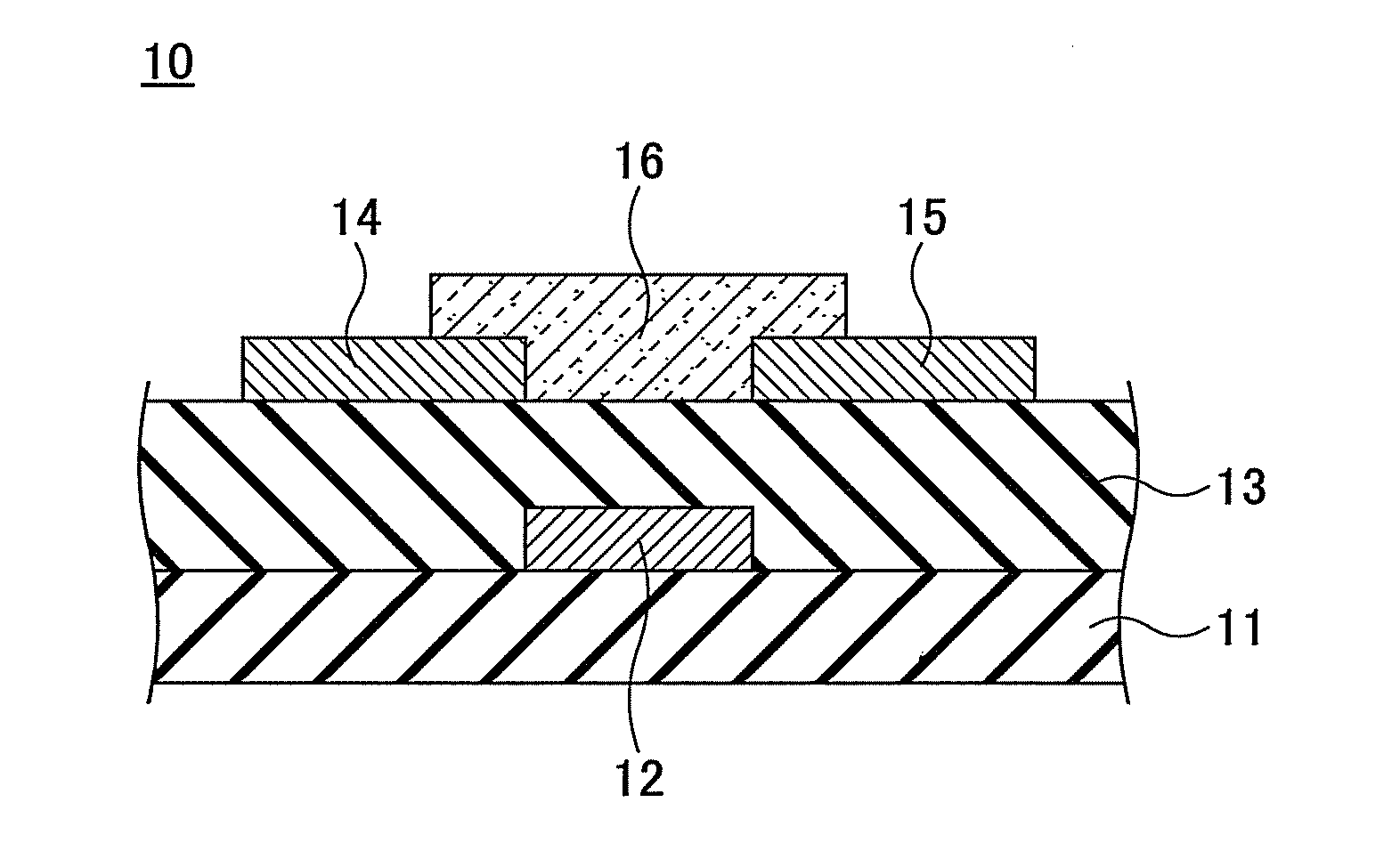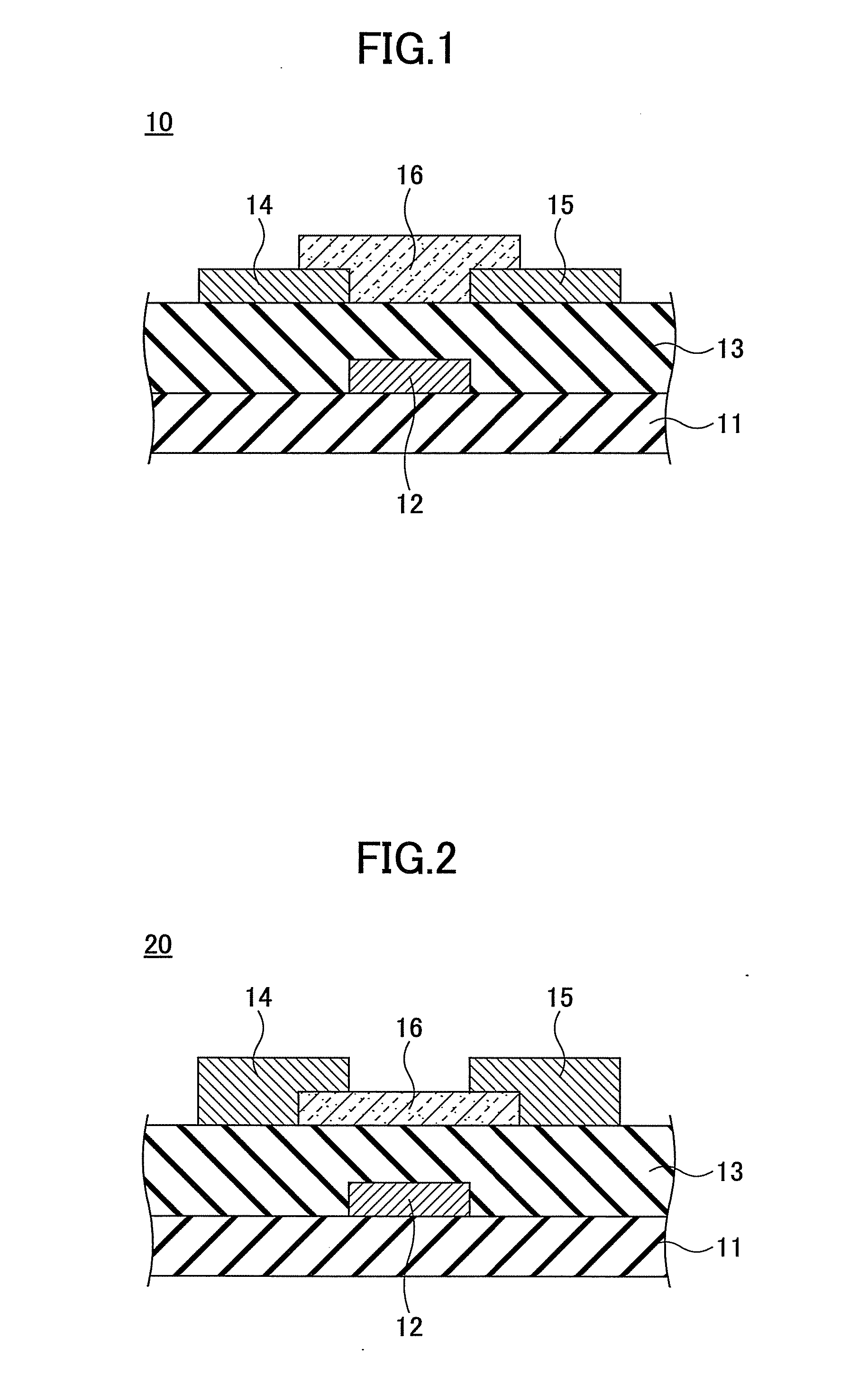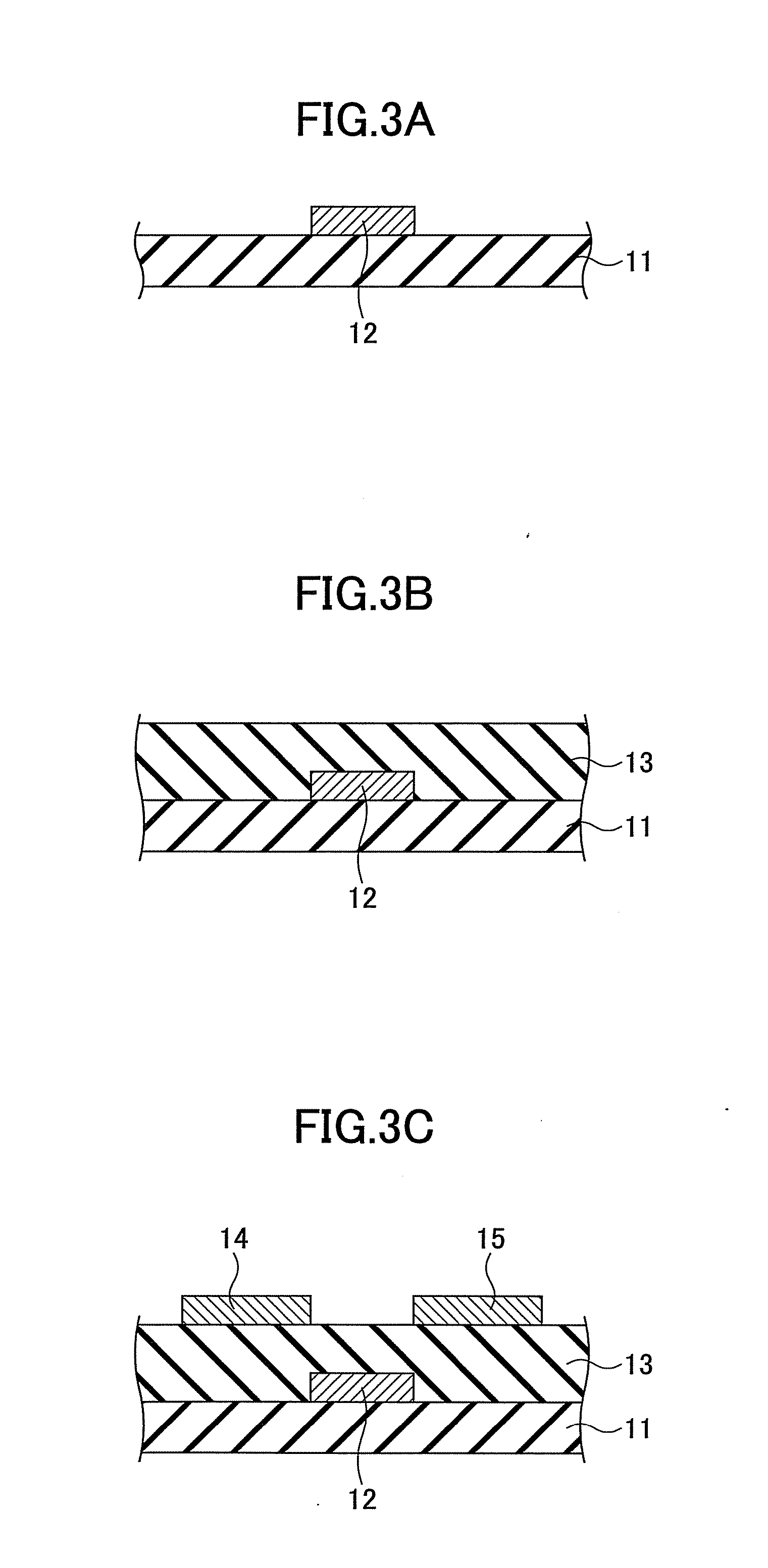Field-effect transistor and method for fabricating field-effect transistor
- Summary
- Abstract
- Description
- Claims
- Application Information
AI Technical Summary
Benefits of technology
Problems solved by technology
Method used
Image
Examples
Example
Example 1
[0047]FIG. 4 is a flowchart illustrating a method for fabricating the field-effect transistor according to the embodiment in Example 1. In Example 1, the field-effect transistor 10 of FIG. 1 was fabricated by following steps S11 through S18, and characteristics of the field-effect transistor 10 were evaluated. Note that a field-effect transistor of Example 1 indicates the field-effect transistor 10 fabricated by following the steps S11 through S18 illustrated in FIG. 4.
[0048]The method for fabricating the field-effect transistor of Example 1 is described below with reference to FIG. 4. In step S11, aluminum (Al) was deposited on the glass substrate 11 so as to have a deposited thickness of 100 nm. In step S12, the deposited aluminum (Al) was patterned in lines by etching and photolithography so as to form the gate electrode 12.
[0049]In step S13, SiO2 was deposited with a thickness of 200 nm by sputtering so as to form the gate insulating film 13 to cover the gate electrode ...
Example
Comparative Example 1
[0056]In Comparative Example 1, a field-effect transistor 10 of FIG. 1 was fabricated by following steps S11 through 17 illustrated in FIG. 4, and characteristics of the field-effect transistor 10 were evaluated. Note that the field-effect transistor of Comparative Example 1 indicates the field-effect transistor 10 fabricated by following the steps S11 through 17 illustrated in FIG. 4. The field-effect transistor of Comparative Example 1 differs from that of Example 1 in that the field-effect transistor of Comparative Example 1 was fabricated without carrying out the step S18 illustrated in FIG. 4.
[0057]FIG. 6 is a graph illustrating characteristics of the field-effect transistor of Comparative Example 1. FIG. 6 illustrates a relationship between a gate voltage V(G) and a source-drain current interval I(DS) in the field-effect transistor of Comparative Example 1 when a source-drain voltage V(DS) is set at 20 V. As illustrated in FIG. 6, the transistor did not sw...
Example
Comparative Example 2
[0059]FIG. 7 is a flowchart illustrating a method for fabricating the field-effect transistor of Comparative Example 2. In FIG. 7, the same reference numerals are assigned to steps identical to those of FIG. 4, and the descriptions thereof are omitted. Note that steps S27 and S28 in FIG. 7 are the same steps as steps S18 and S17 in FIG. 4, respectively. That is, FIG. 7 illustrates the flowchart in which step S17 and step S18 of the flowchart in FIG. 4 are conducted in a reverse order.
[0060]In Comparative Example 2, the field-effect transistor 10 of FIG. 1 was fabricated by following steps S11 through S16, S27 and S28 illustrated in FIG. 7, and characteristics of the field-effect transistor 10 were evaluated. Note that a field-effect transistor of Comparative Example 2 indicates the field-effect transistor 10 fabricated by following the steps S11 through S16, S27 and S28 illustrated in FIG. 7. The field-effect transistor of Comparative Example 2 differs from that...
PUM
 Login to view more
Login to view more Abstract
Description
Claims
Application Information
 Login to view more
Login to view more - R&D Engineer
- R&D Manager
- IP Professional
- Industry Leading Data Capabilities
- Powerful AI technology
- Patent DNA Extraction
Browse by: Latest US Patents, China's latest patents, Technical Efficacy Thesaurus, Application Domain, Technology Topic.
© 2024 PatSnap. All rights reserved.Legal|Privacy policy|Modern Slavery Act Transparency Statement|Sitemap



